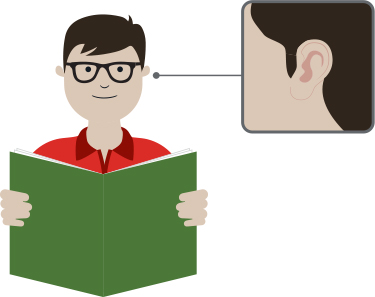


We regard everyday auditory experience as a learning process that shapes the Plasticity in the human auditory system: A double-edged sword Interplay of multiple processing stations, and the “give-and-take” betweenĬortical and/or subcortical systems, underlying human behavior. Our view is consistent with an emerging trend in neuroscience to consider the To understand auditory learning, then, we areįorced to move past a focus on an individual processing station as a single locus of Specialized to perform a specific function, this specialization has evolved in theĬontext of the entire circuit. Thereof-is a reflection of this integrated network. The auditory neuraxis, and we argue that sound processing-and any assay Any acoustic event catalyzes activity throughout The auditory system should be thought of as a distributed, but integrated, circuit ( Fig. We propose a complementary “outside-in” approach. “inside-out” approach has contributed greatly to our understanding of

Station would build each block necessary to construct the auditory circuit, and this Hierarchical models recognized the interconnectivity of the system, the emphasis was toĬharacterize each nucleus's specialization.
#Websters definition of auditory learner series
Traditional models characterized the auditory system as series of relay stationsĪlong an assembly line, each with distinct functions. Rethinking the auditory system: A distributed, but integrated, circuit Finally, we place learning in the context of aĭistributed, but integrated, auditory system. Markers of auditory processing in humans. The neurophysiological foundations underlying auditory processing and that offer objective We highlight experiments that advance our understanding of Of dichotomous systems: (i) the afferent projections that transmit signals from ear to brainĪnd the efferent projections that propagate signals from brain to ear, and (ii) the primaryĪnd nonprimary processing streams that suffuse the auditory neuroaxis ( Fig. The mechanisms behind these changes lie in two sets Here we argue that cognitive, sensorimotor, and reward ingredients engenderīiological changes in sound processing. Plasticity to devise strategies to improve language and communication in normal and Experience navigating this sensory world drives languageĭevelopment-perhaps the most remarkable auditory learning task humansĪccomplish-and it is necessary to understand the principles that govern this This learning is fundamental to our ability to function inĪnd adapt to our environments. Response properties following learning, and in the auditory system plasticity has been Sensory systems are prodigious in their ability to reshape Nervous system plasticity has been observed across the animal kingdom from singleĬells to sophisticated circuits.


 0 kommentar(er)
0 kommentar(er)
